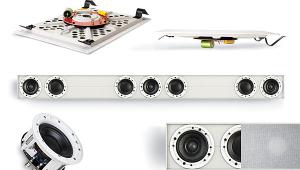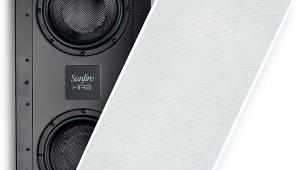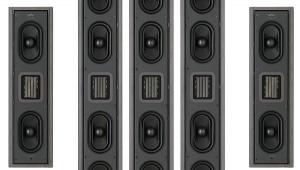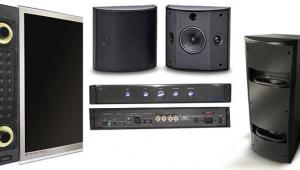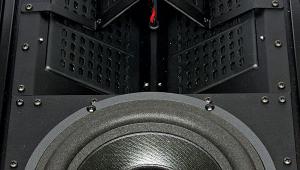Niles Cynema Soundfield CSF55A In-Wall Soundbar System
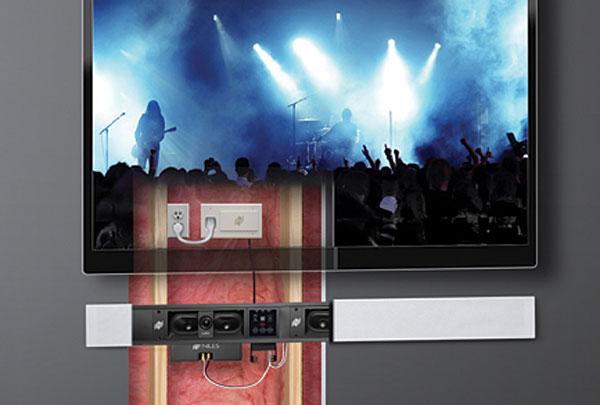
AT A GLANCE
Plus
A 55-inch horizontal soundbar that can be installed without modifying the wall studs
Can learn volume and mute IR codes from your TV’s remote
Excellent simulated surround and music processing
Minus
Really needs a subwoofer
Only one HDMI input
THE VERDICT
The Niles CSF55A is more expensive than a similarly performing active soundbar, but it’s well worth it for the person who wants the gear to disappear without giving up any sound quality.
It’s either the craziest flippin’ idea ever, or it’s absolutely brilliant. I mean, in-wall speakers are one thing. Soundbars, though, especially active soundbars, are completely different creatures. But somebody at Niles—whether inspired by an offhanded joke, an improbable Frankenstein-like engineering experiment, or an alcohol-infused haze after a tedious sales meeting—decided that what the world needs is an active, in-wall soundbar system to complement wall-mounted flat-panel TVs. And thus, combining the DNA of two breeds of speakers that people either love to hate or hate to love, the Cynema Soundfield CSF55A—the world’s first in-wall soundbar system—was born.
A Stretchable Soundbar?
While the idea of an in-wall soundbar system might seem a bit odd or, perhaps, totally impractical, there’s no doubt that the engineering and design of the Niles CSF55A are ingenious. For starters, there’s the highly adaptable configuration of components that allows you to flush-mount the 55-inch-wide CSF55A in standard 2x4 walls without shaving so much as a splinter from any of the three studs typically (and inconveniently) spaced across that width.

The exceptional design aspects don’t stop there, however. The $1,749 CSF55A is the middle model of three active CSF systems from Niles, the others being the 65-inch CSF65A and the 48-inch CSF48A. In all three models, the active circuitry and the speaker modules are identical; the only differences are in the widths of the grilles and the installation brackets. In other words, all three CSF entries are the same speaker system; you select one based on the size of your TV. Of course, active speaker systems require electricity, but Niles’ Cynema Soundfield soundbars use an external power supply in an integrated mounting box that’s installed near an AC outlet. Although everything else that’s part of the CSF system is in-wall, the included, white, high-voltage AC power cord that connects the power supply to the AC outlet remains outside the wall. Since the DC power cord that runs from the power supply to the amplifier module in the CSF is low-voltage, you can run it inside the wall without compromising safety or building codes. All of this alleviates the need for an electrician during installation. In fact, the CSF55A and its siblings are simple enough to configure and install that advanced DIY homeowners should have little to no trouble completing the job on their own.
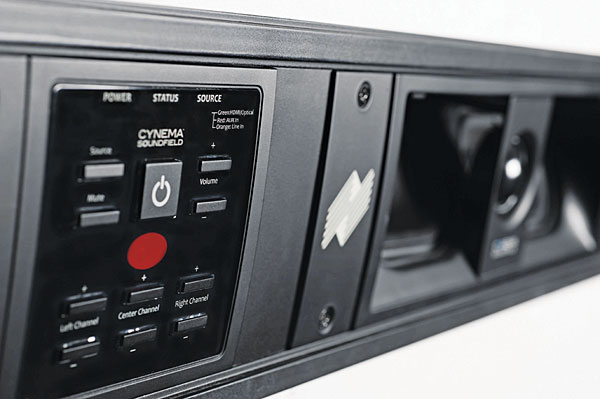
Know Guts, Know Glory
Much of the simplicity of a typical active soundbar comes from its all-in-one, single-cabinet design. Interestingly, the straightforwardness of the CSF55A is the result of its unique multiple-component architecture, which includes three identical loudspeaker modules, a three-channel amplifier module, the remotely located power supply, a set of installation rails and brackets, and the metal grille. Each L-shaped, sealed speaker module is about 9.6 inches wide by 6.5 high by 4 deep and incorporates a 1-inch silk-dome tweeter with two 2 x 3-inch cone woofers. The 30 watts x 3 amplifier module is similar in size and shape to the speaker modules. On what becomes the bottom of the amp module (after it’s slid into the wall) are the connections for 24-volt DC power, speaker terminals, an HDMI input and an HDMI passthrough output, an optical digital audio input, two 3.5-mm analog stereo inputs, and an external IR receiver input, as well as a subwoofer output with a 5-volt DC jack to power an optional Niles SW-T wireless subwoofer transmitter ($99). To take advantage of the subwoofer output, you have to use an SW-T along with an SW-R wireless receiver (also $99) connected to a Niles SW6.5 or SW8 powered subwoofer. Since the CSF55A’s amp module is only rated down to 100 hertz (–3 decibels), I asked Niles to ship out an SW-T/SW-R combo and an SW8 ($599).
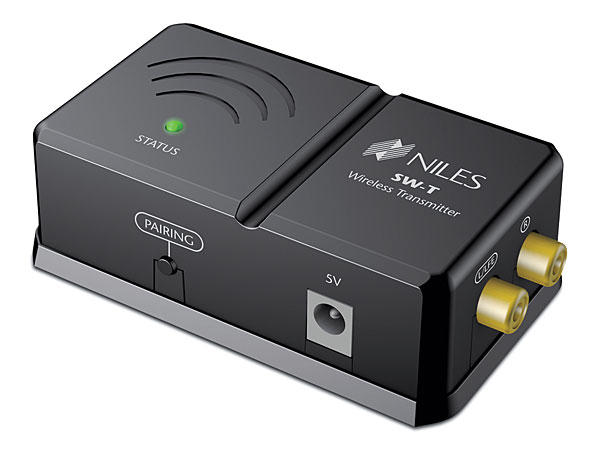
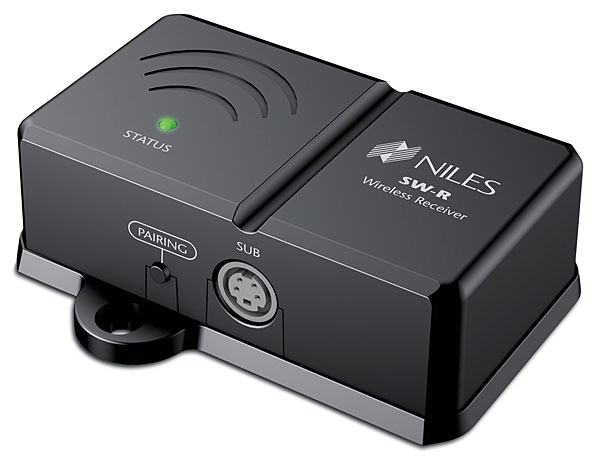
The Niles SW8 has a built-in 300-watt (RMS) switching amplifier that powers an active, 8-inch aluminum-cone woofer along with a pair of 8-inch aluminum-cone passive radiators. Niles says the sub has a frequency response of 36 to 200 Hz, without specifics. The SW8 includes a few uncommon, custom-installation-related features, such as a built-in OmniMount-compatible threaded insert for mounting the sub on the wall (!) or from the ceiling (!!). There’s also an RJ-45 jack for connecting the SW8 via Cat-5 to an AVR (using a balun adapter). The front-firing active woofer has a black cloth grille, while the side-firing matte-black aluminum cones aren’t covered.
The Greatest Thing Since Sliced Drywall
The Niles CSF55A is slightly more complex to install than the average in-wall speaker—but it’s damn sure easier and quicker to manage than a three- or five-speaker in-wall system. There are only two holes to cut in the wall: one for the soundbar, one for the power supply’s dual-gang mounting box. In both cases, the studs stay where they are—all that’s removed is the drywall—and since the speaker wires run in front of the studs, there’s no drilling through studs involved, either. The mounting system consists of a top and bottom rail held in place by positionable “Screw Down Slide Brackets” (which screw into the studs) along with a pair of “Clamp Down End Brackets” (which attach to the drywall at each end of the bracket). The speaker modules, the amplifier, and the optional wireless subwoofer transmitter are inserted into the wall and click securely in place between the rails. Pivoting L brackets allow each module to hang outside the wall from the bottom rail, which frees up both of your hands, making it considerably easier to connect the speaker wires and A/V cables. It’s especially “handy” when it comes to working with the amp module’s tightly packed jack panel.
- Log in or register to post comments




